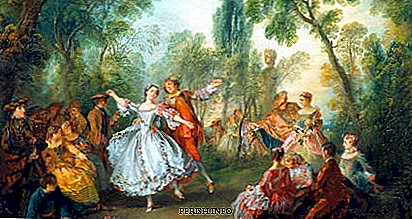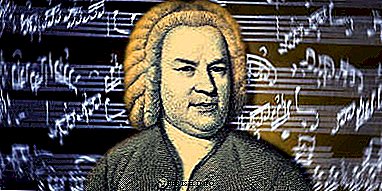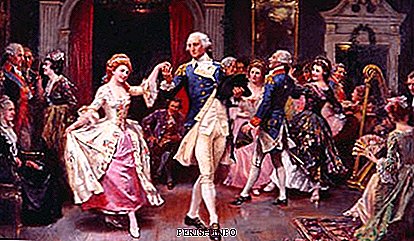I.S. Bach Suites and Partitas for Clavier

Suites and partitas appeared long before Johann Sebastian Bach. The composer's polyphonic thinking allowed him to poetry the compositions, which brought cyclical forms to a new level. Thanks to Bach, household dances, which were part of the cycle, began to wear an inspired coloring. You can learn the history of the creation of suites and partit, get acquainted with the musical characteristics, read interesting facts on our page.
History of creation
It is believed that Johann Sebastian Bach created suites and partitas for various compositions of the orchestra, as well as for solo instruments, throughout his creative career. Nevertheless, a significant part of the created pieces for clavier was written during the time of his residence in Kothen, namely from 1717. In this city, the musician served as head of the court orchestra, and also engaged in the training of Prince Kothenski. All free time from work, Bach could devote to composing a new music. The absence of a body determined the field of its further activity. So, Johann Sebastian composed precisely orchestral and clavier music.

In addition to the "English" and "French" suites, during this period were written and other works for clavier, including the first volume of "HTK", a large number of two-voice and three-voice inventions, as well as "Chromatic fantasy and fugue." The exact date of the creation of most works for clavier is unknown, since they were not published during the composer’s lifetime. It is believed that the musician sent for publication only those compositions that could be a practical guide for the performer and had a relatively small amount.
In 1731, the first part of the "Clavier-Ubung" was released. This collection includes six famous scores. In 1735, the second part of this collected work was published, which contained the Italian Concert and one partita.
Today, the "English" and "French" suites, as well as 7 partit are included in the repertoire of famous pianists of the world.

Interesting Facts
- Some compositions from the collection "French Suites" were originally included in the "Notebook of Anna Magdalena Bach".
- The name of the musical old-concert form "partita" literally translates from Italian as divided into parts.
- In 1731, the first collection of Clavier-Ubung I scores was published. The collected works include 6 scores (BWV 825-830). The second part was published 4 years later, it included one Italian concert and partita.
- It is believed that the suites and partitas were created by the composer as instructive exercises not only for the development of technology, but also for improving the performance techniques and proper understanding of the genres and styles characteristic of time.
- In the composer's works, there are partitas not only for clavier, but also for orchestra, as well as for solo instruments such as flute, violin.
- The composer wrote 23 suites for clavier, 19 of which were combined into three collections. At the moment, collected works are rightfully considered to be masterpieces of world classical music.
What is a suite

A suite is a fixed sequence of instrumental compositions, dances or processions. The principle of unity was based on the contrast of the parts. The suite went a long way before, finally formed on the structure. So, by the 17th century, the ideal formula of the chamber suite was clearly presented:
- Allemande - Predominantly bipartite dance, a characteristic feature of which is the absence of a sharp rhythm and sharp contrast in both the tonality and thematic. It is customary to write the Allemande at a calm pace. The use of a large amount of jewelry is welcome.
- Chimes - majestic, court dance. A three-share event is a characteristic feature that necessarily begins with an outbreak. There are special rhythmic formulas that are distinctive for this dance.
- Sarabanda - ancient dance-procession. For the dance is characterized by a three-session, with an emphasis on the weak second or third beat of the beat. Character has a tragic coloration, often an essay is associated with the burial ritual. By semantic content refers to chaconne or passacale. The pace is slow, the mood is minor.
- Gigue - agile dance, the origin of which is associated with England and Ireland. It is believed that this is the folk dance of pirates and sailors. The size is three-part, although you can find options with a two-part meter.
In composing practice before Bach, all the rooms in the suite had a homophonic-harmonic basis, that is, they had a melody and accompaniment. Johann Sebastian Bach's innovation was that he introduced the polyphonic structure. By the importance of the content, the suites are not giving way to other baroque genres, such as concerts or masses. Household intonation is replaced by sublime melodic figures, which indicates a new interpretation.
English suites
In the "English" suites of Bach the features of the composer's concert style predominate:
- cycle consolidation;
- thematic unity;
- polyphonic voice development;
- tonal association;
- contrast mapping of parts;
- increase the role of middle voices.
Traditionally, the suite consists of 4 main rooms. In some compositions, the composer expands the cycle by adding a prelude, minuet, burre or gavotte.
The suite is united by one tonality. You can divide the cycles into major and minor. To major include:
- No. 1, BWV 806 - A major;
- №4, BWV 809 - in F major.
The minor suites include:
- No. 2, BWV 807 - in A minor;
- No. 3, BWV 808 - G minor;
- No. 5, BWV 810 - in E Minor;
- No. 6, BWV 811 - in D minor.
French suites

According to many musicologists, "French" suites were created by the composer, primarily for pedagogical purposes. At the same time, the cycle of compositions shakes a figurative variety, which testifies to the skill of the composer in polyphonic writing technique.
Bach knew the work of French harpsichordists well, but it was not fundamental to creating a cycle. This is explained by the fact that in those days in France there was a fashion for programmatic music. So, the musicians created software miniatures for clavier, where the name already tuned the listener to a specific plot. The name "French" refers the listener to the country in which the tradition was born to combine dance into suites.
Partitas
One of the varieties of the concert suite can be considered a partita. A distinctive feature of the suite is the increase, expansion of the structure. To the four main works that are part of the classic suite, the partita also included a prelude or introduction, as well as inset contrast parts:
- Prelude - introductory instrumental piece, written in a free compositional form. It is often based on the theme of the following musical compositions in the cycle. Requires unity of texture.
- Symphony (Sinfonia) is an introductory polyphonic piece, usually replaces the prelude in a partite. Does not require texture unity, it is possible to change the pace within the composition. The form is free.
- Bourrée - This is a bipartisan or triland dance, which is based on hopping motion. Characterized by a sharp rhythm. Originated in France. The pace is fast, rapid. In the party it was used before the final gig, and also after the saraband.
- Gavotte - bipartite dance, common in France from the 17th century. As part of it is used most often after the saraband.
- Polonaise - a three-part Polish dance, reminiscent of a procession. It has a solemn character.
- Burlesque - a type of scherzo, translated from French as a joke. The work is humorous. Usually written in fast tempo.
- Minuet - an old three-part dance originated in France. The form is usually three-part re-structure.
- Scherzo - instrumental piece, written in a three-part size. The tempo is lively, characterized by the use of special rhythmic and harmonic turns.
- Aria - in the part is an instrumental composition, with a solo voice and accompaniment. The pace can be moderate or slow. It has a pronounced melody of a singing character. The three-part form is characteristic.
Additional musical material is needed to expand the musical space.

Four works serve as an unshakable frame - these are the allemande, chime, saraband and gigue. Partita is characterized by a free sequence of numbers, their number is also determined by the author. Thus, the first partita of six presented in the Clavier-Ubung I collection consists of a prelude, an allemande, chimes, a saraband, two minuets and a jig. Combines the composition of the tonality of B-flat major.
Partitas were created before Bach, but the baroque composer became a real innovator in this genre. Initially, this form of musical compositions was a separate type of variations of the choral melody for the organ. Use was possible only for sacred music in the 17th and 18th centuries. In the works of the German composer, the term began to be used for secular music.
Suites and partitas combine both traditional and innovative features. Many musical researches agree that it is in the works of I.S. Bach was modeled composer principles of the suite and partita. Bach's music is the eternal source of the harmony of the mind and soul of man.

Leave Your Comment